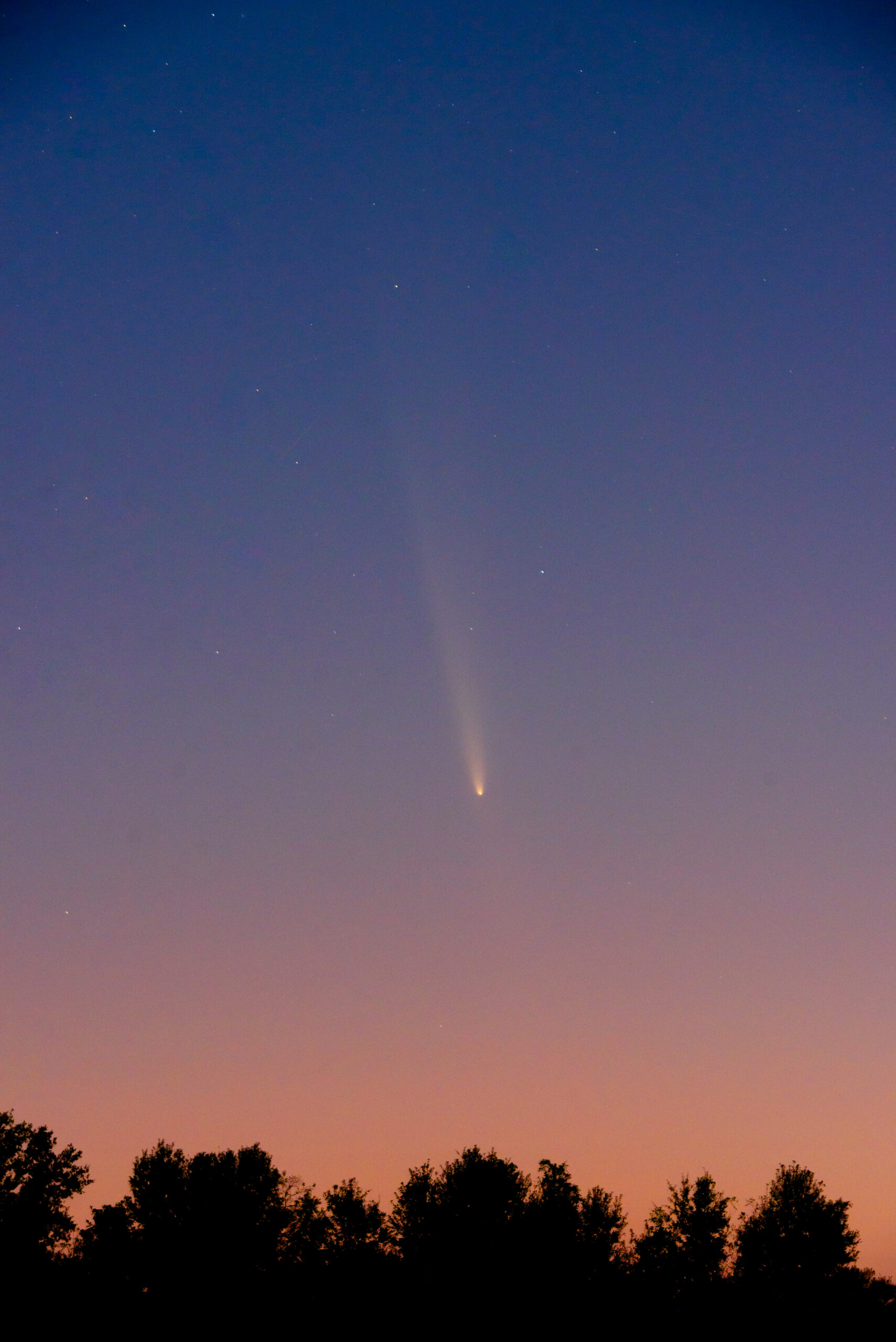Exploring the Journey of Comet C/2023 A3 (Tsuchinshan-ATLAS)
In a fascinating celestial event, the comet known as C/2023 A3, also referred to as Tsuchinshan-ATLAS, has captured the attention of skywatchers and astronomers alike. This comet recently made a notable appearance over NASA’s Michoud Assembly Facility located in New Orleans, as depicted in an image captured on October 13, 2024. The sighting of this comet is a reminder of the vast and mysterious universe that lies beyond our immediate solar neighborhood.
Origins in the Oort Cloud
Comet C/2023 A3 hails from the Oort Cloud, an enigmatic region far beyond Pluto and even the distant edges of the Kuiper Belt. The Oort Cloud is a theoretical cloud of icy bodies that surrounds the solar system at its farthest reaches. It acts as a reservoir for comets, and occasionally, gravitational interactions send some of these icy wanderers into the inner solar system, where they become visible from Earth. The journey of these comets from the farthest reaches of our solar system offers scientists valuable insights into the early conditions that prevailed during the solar system’s formation.
Viewing Opportunities for Comet Enthusiasts
For those eager to catch a glimpse of this cosmic traveler, Comet C/2023 A3 will remain visible until early November 2024. However, for the best viewing experience, enthusiasts are encouraged to observe the comet between now and October 24, as this period offers optimal visibility. During this time, the comet is expected to shine brightly against the night sky, providing a unique opportunity for amateur astronomers and casual stargazers to witness its journey.
Understanding Comets: A Brief Overview
To appreciate the significance of observing a comet like C/2023 A3, it’s important to understand what comets are. Comets are small celestial bodies composed of ice, dust, and rocky material. When they approach the Sun, the heat causes the ice to vaporize, creating a glowing coma—a cloud of gas and dust—around the comet’s nucleus. This process also results in the formation of a tail, which always points away from the Sun due to the solar wind. The tails and comas are what make comets such spectacular sights in the night sky.
The Role of NASA’s Michoud Assembly Facility
The image of Comet C/2023 A3 captured over NASA’s Michoud Assembly Facility is significant. This facility, located in New Orleans, is a vital part of NASA’s infrastructure, primarily used for the assembly of large-scale space structures. It has played a crucial role in the construction of components for the Space Launch System (SLS), NASA’s powerful deep space rocket designed for future lunar missions. The sight of the comet over this facility is a symbolic reminder of the intersection between human technological achievements and the wonders of the universe.
Historical Significance of Comet Observations
Throughout history, comets have fascinated human societies, often being regarded as omens or harbingers of significant events. Modern science, however, views them as invaluable objects for study. By analyzing the composition of comets, scientists can glean information about the primordial materials that existed at the dawn of the solar system, offering clues about the origins of planets and possibly even life itself.
How to Observe Comet C/2023 A3
For those interested in observing Comet C/2023 A3, there are several tips to enhance the viewing experience. First, find a location far from the bright lights of cities to reduce light pollution, which can obscure the view of celestial objects. A pair of binoculars or a small telescope can significantly improve the clarity and detail of the comet visible to the observer. Additionally, consulting star charts or astronomy apps can help locate the comet in the night sky.
The Science Behind Comet Observations
Observing comets like C/2023 A3 is not just about appreciating their beauty. It also plays a crucial role in scientific research. Each comet carries with it a unique history, encapsulated in its icy core. By studying these ancient travelers, astronomers can better understand the conditions that prevailed in the outer solar system billions of years ago. This research can provide insights into the processes that led to the formation of planets and other celestial bodies.
The Broader Impact of Comet Discoveries
The discovery and observation of comets have broad implications for science and society. They inspire a sense of wonder and curiosity about the universe and our place within it. Furthermore, they underscore the importance of continued investment in space exploration and research. By expanding our knowledge of comets and other celestial phenomena, we lay the groundwork for future scientific breakthroughs that could benefit humanity in diverse ways.
Conclusion: A Celestial Event Worth Watching
As Comet C/2023 A3 continues its journey across the night sky, it serves as a reminder of the dynamic and ever-changing nature of our solar system. Observing this comet offers an opportunity to connect with the universe and ponder the mysteries that lie beyond our planet. Whether you are an avid astronomer or a curious observer, the sight of Comet C/2023 A3 is a celestial event not to be missed. For more information and tips on skywatching, interested readers can visit NASA’s official website dedicated to solar system exploration.
For more Information, Refer to this article.

































